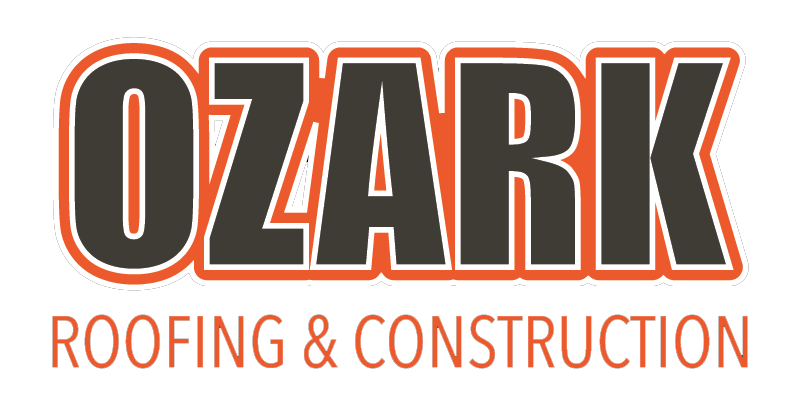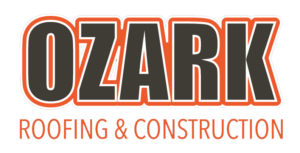ROOFING 101
Key Terms & Definitions
- 3-Tab Shingles: Asphalt base shingles with 3 distinctive tabs and no additional designs.
- BUR/BURG: Built up roof/ Built up gravel roof system typically asphalt based roof systems.
- Base Flashing: Vertical flashing that typically goes up a wall approximately 8 – 12 inches. This type of flashing is usually accompanied with a metal flashing termination (Termination Bar and/or Counter-flashing).
- Coating: A liquid applied system that can cover either a vertical surface (walls) or a horizontal surface (existing roof system or a structural deck). Coating products come in a variety of products such as Silicone, Urethane, and SEBS.
- Concrete Restoration: A repair to concrete or stucco that typically involves concrete patching along with a coating system.
- Curb Flashing: Vertical flashing that typically goes up the face of a roof top unit (RTU) or other mechanical units approximately 8 – 12 inches. This type of flashing is usually accompanied with a metal flashing termination (Termination Bar and/or Counter-flashing).
- Corner: An area of the roof as well as a roof zone in wind uplift calculations where enhancement or fastening is the most dense to meet desired wind up-lift calculations. This is also the corner of a roof system.
- Collector Head: The spot where water is collected from a scupper assembly and connected to a downspout to provide proper drainage, typically in low slope roof systems.
- Cricket: A component of a roof system that is typically built out of insulation nor wood to assist a roof system in draining appropriately. See Tapered insulation.
- Deck: A structural roof deck can be made of a variety of products – typically Wood, Metal, and Concrete. The deck is what Florida product approvals and Miami Dade NOA’s are based on in design for wind uplift calculations.
- Downspout: A drainage location on a roof system. These are usually accompanied with other metal components such as a gutter or scuppers and collector heads. These are found on both steep slope and low slope roof systems at the edges of a roof system.
- Drain: A drainage location on a roof system. These are found on low slope roof systems typically and are connected to a plumbing drainage system.
- Eave: The edges of a roof that extends beyond the exterior sides. Eaves protect your siding and your foundation. Eaves are normally accompanied by Drip Edge Flashing in roofing assemblies in both low slope as well as steep slope roof systems.
- EPDM: EthylPropolenDieneMonomer (EPDM for short) is a single ply roof system that is typically installed on low slope roof systems (mechanically fastened or fully adhered “Glued”. The product is normally black in color and the seams are glued together.
- Expansion Joint: An area of a building that allows for expansion and contraction. These can be found in horizontal applications such as a roof expansion joint and vertical applications such as an exterior building expansion joint that would need to be treated with a waterproofing system.
- Fascia: A flat material that covers the ends of rafters/trusses. This is normally wood that is followed by a fascia cover that is typically made out of metal.
- Field: An area of the roof as well as a roof zone in wind uplift calculations where enhancement is least dense to meet desired wind up-lift calculations. This is the middle of the roof area.
- Gutter: A trough at the edge or eave of a roof system that is fixed in place for the purpose of draining a roof system. Gutters are typically connected to downspouts.
- General Construction: An are of the construction industry that is not governed by a specific trade license such as Roofing, HVAC, Electrica, or Plumbing. This can include a variety of work types such as waterproofing, window replacements, soffit and fascia as well as others.
- Headwall Flashing: The upward side end of a roof system where a sloped roof system meets a wall. This is typically flashed in with L-metal.
- Hip: The area of a steep sloped roof system where two sloped planes meet.
- Inspections: These are required during permitted projects with the governing municipality. There are normally two inspections in a roof project an “In progress” and a “Final” inspection.
- Low Slope Roofing: Typically are products installed on roofs of 2/12 or less, examples are architectural shingles, architectural metal panels, and tile.
- Metal Panel Roofing: Metal roofing systems typically installed over a structural deck.
- Exposed Fastener System: A metal panel system where the fasteners are installed through the metal panel and exposed to the elements. An example of a exposed fastener panel is 5V Crimp.
- Hidden Fastener System: A metal panel system where the fasteners are installed through clips or edges and NOT exposed to the elements. An example of a hidden fastener panel is Standing Seam.
- Metal Flashing Components:
- Drip Edge: Metal flashing component normally installed at the eaves of a low slope or steep slope roof system.
- Gravel Stop: Metal flashing component normally installed at the eaves on a low slope roof system.
- Coping Cap: Metal flashing component installed at the top of parapet walls. Normally found on low slope roof systems.
- Counter-Flashing: Metal flashing component installed at the top of base flashing, wall flashing, or curb flashing. Typically found on low slope roof systems.
- L-Flashing: Metal flashing component installed at Rake walls or had walls. Typically found on a steep slope roof system.
- Modified Bitumen: Asphalt based rolled roofing membranes (torch, cold adhesive, peel & stick or asphalt applied).
- New Roof Construction (New Con): The installation of a new roofing system on a newly constructed building.
- Not to Exceed (NTE): An agreed amount on a service call or service relationship where if a reactive repair is to exceed a specified amount prior authorization is needed.
- Parapet Wall: A component of a roof system that is located at the perimeter. These are normally found on a low slope roof system and accompanied by either counter-flashing, base flashing, coping cap, or full flashing.
- Parapet Wall Flashing: Full flashing or a parapet wall with membrane such as TPO, PVC, EPDM, or Modified Bitumen. The walls are normally wrapped up and over to the outside edge of the wall and tied into the horizontal roof system.
- Perimeter: An area of the roof as well as a roof zone in wind uplift calculations where enhancement or fastening density is increased to meet desired wind up-lift calculations. This is also the perimeter of a roof system that is typically a leading edge or a parapet wall.
- Polyurethane: A synthetic resin compound comprised of carbamate/urethane groups linked to polymer groups. Typically used in sealants, paints, coatings, and varnishes.
- Preventative Maintenance: Usually is in conjunction or post roof inspection. it is where an existing roof system and components are brought back to good working condition. This could include a roof coating system.
- PVC: Polyvinyl Chloride (PVC for short) is a single ply roof system that is typically installed on low slope roof systems (mechanically fastened or fully adhered “Glued”. The product is normally white in color and the seams are welded together. This is an older product when compared to TPO.
- Rake: The exposed edge of a gabled roof that extends from an eave to the ridge of the roof’s sloped sides.
- Re-Roofing: The removal of an existing roofing system down to the structural decking and the installation of a new roofing system.
- Recover Roof System: The installation of a new roofing system over an existing roofing system.
- Repair: A reactive approach to problems with a roof system such as a roof leak during heavy weather/rain events.
- Retrofit Roof System: The application of a new roof system, typically a single ply roof system over an existing metal roof system. Occasionally a retrofit can be where a sloped roof system is fabricated and installed over a flat roof.
- Roof Restoration: Is similar to preventative maintenance work, but on a much larger scale. Typically, the replacement of base, curb and penetration flashing as well as sheet metal are performed while the existing roof system is left in place. This can also be classified under a roof coating system.
- Response Time: The time in which it is agreed that a service call will be investigated by. Response times are usually categorized into Routine, Normal, and Emergency Service.
- Routine Service: Typically 3 – 5 Days.
- Normal Service: Typically 24-48 Hours.
- Emergency Service: Typically 4 – 8 Hours.
- Ridge: The horizontal line running the length of the roof where two roof planes meet.
- Roof Zones: Defined areas of a roof system used in wind uplift calculations – See Corner, Perimeter, and Field.
- Sealant: Material used for sealing something in order to make it air-tight or water-tight. This is normally polyurethane or Silicone.
- Scope Work: This is over and above a common roof repair. This can include; Fit out work; metal flashings; roof flashing; penetration replacements; roof hatch replacements /installations; gutters & downspout replacements; roof drainage replacements/repairs.
- Scupper: A drainage location on a roof system. These are usually accompanied with other metal components such as a downspout and a collector head. These are typically found on low slope roof systems.
- Shingles: Asphalt based shingles with an added architectural design.
- Silicone: A synthetic material in which are polymers with a chemical structure on chains of alternate silicon and oxygen atoms. Silicone is used in sealants as well as coating applications.
- Soffit: The underside of an architectural structure such as the overhang at the eaves of a roof system.
- Solar Panel: A panel designed to absorb the sun’s rays as a source of energy.
- Rails: The components that the solar panels are tied to allowing flexibility of layout.
- Supports: The “feet” that connect the rails to the roof system.
- Steep Slope Roofing: Typically are products installed on roofs of 2/12 or greater, examples are modified bitumen, BUR, TPO, PVC, or EPDM.
- Step Flashing: A piece of metal that is used to flash a wall typically at Rake’s to assist the roof in draining water away from a wall.
- Structural Metal Roofing: Metal roofing systems typically installed over open framing.
- Tapered Insulaiton: A component of a roof system that is installed to provide proper drainage to a low slope roof system. These are normally used when the slope is not provided in the deck or a deck has deflected to a point where it is no longer providing appropriate drainage.
- Tile: A steep slope roof product that is typically made of concrete or clay. They are shaped generally in flat or curved “S” tiles.
- Termination Bar: A metal flashing component that is used to terminate flashings of roof systems, typically at Base Flashing, Curb Flashing, and at times parapet wall flashings.
- TPO: Thermopolyolefin (TPO for short) is a single ply roof system that is typically installed on low slope roof systems (mechanically fastened or fully adhered “Glued”. The product is normally white in color and the seams are welded together. This is a younger product when compared to PVC.
- Valley: An area of a roof system where two sloped areas meet to provide appropriate drainage.
- Waterproofing: A general term that means to make impervious to water but within construction it means the protection of the vertical surface of a structure from water. This includes your exterior walls, window, sealants, Expansion joints, sealant joints, concrete joints etc.
- Wet-Glazing: Refers to the sealant and installation of at the transitions from metal frames to glass in the window repairs.
- Wind Mitigation: An approach to mitigating the effects of high winds in tropical zones such as Florida.
- Wind Up-Lift: A term used to describe the pressures needed for roof systems to be designed to in order to withstand high wind events such as Tropical Storms, Tornadoes, or Hurricanes.
- Wind Zones: Geographical areas where higher to lower wind speeds are identified, assisting in designing wind up-lift pressures for roof systems in those areas.



